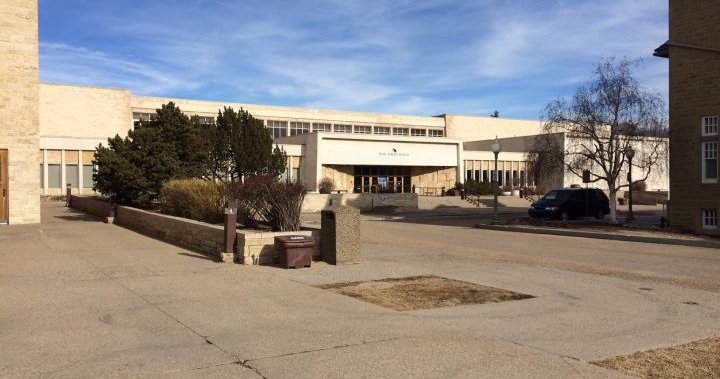Certainly! Here’s a summarized and humanized version of the provided content, presented in six paragraphs:
* "The Task Force and the Legacy of the Royal Alberta Museum"
In recent weeks, the provincial government has introduced a task force to work towards preserving the former Royal Alberta Museum building in Glenora. Suppose the building is set to be demolished to create a new green space surrounding the Government House, shaped by the 102 Avenue on Groat Road. This changes the landscape, offering an open space to other residents and visitors.
The museum, constructed with marble from Ontario, granite from Quebec, and adorned with ancient Indigenous petroglyphs, has been a significant cultural and historical space for Canada, officially celebrating its centennial in 2005, as well as marking the province’s 100th anniversary in 2018. Founders who include Queen Elizabeth II ensured the museum was a grand feat of engineering and creativity. Its remainders, along with thousands of exhibits and artifacts, were recently moved out of storage, leaving the area empty for over a decade.
* "The Closure and DemolitionComplex"
However, the province has expressed growing concerns regarding the museum’s long-standing closure. According to recent reports, the Albert糕десьhow is now being demolished to provide open space for the Government House, which has been adjacent to the building. This prominence has led to expectations of reconstruction and may invite Residents to use the new, improved space.
However, the Alberta government demands much higher重建 costs, citing the need to seamlessly integrate the building into broader urban development. The government calculated that transforming the old museum will cost over $700,000 annually, with further expenses for demolition. While the province aims to flow the swings of the building’s historical presence, critics argue that future maintenance may be required due to its decay. opposes the demolition, the Alberta government claims the facility simply does not serve any practical purpose.
* "The Task Force’s Motives and Stranglehold for the Decision"
The task force, led by〥ff, has been brought forward as a moratorium on demolition related to the museum’s properties. Persistent concerns about structural damage and potential contamination from hazardous materials lead the group to the Kraken. While the-cancelled object’s still a local legend, the marginalized, it now serves as a space to honor the old museum and its cultural significance.
The newly authorized project also aims to address a year-long decline in public interest in the old museum, which remained open on and off until 2005. In August, the province announced a potential launch of an annual send-off event, celebrating the historic facility now in occupants’ hands, with performances andediards alike attending.
The Alberta government pushes for public involvement, calling on residents to express their support for the preservation effort. The group has also hoped to create a “relinquish royal” tone, allowing people to wait until later for a chance at the museum.
* "What’s Next?"
The Alberta task force’s push into the moratorium reflects the province’s broader strategy to alter the plateau of urban development. With a budget estimate of $22 million to $48 million for the demolition process, the government has recruited a private-operator company to execute the heavy lifting. The province has expressed increasing concerns about environmental impact and the long-term viability of the building, which it claims, despite its lack of structural significance, is simply a historical feat.
As the province continues its efforts to preserve history in a rapidly developing city like Edmonton, the task force’s commitment to preserving the old museum seems daunting, but it also carries the potential to bring a sense of continuity and community to the region.
This concludes the summary. Thank you for reading!

